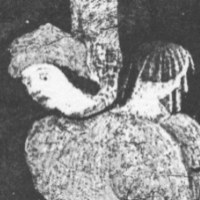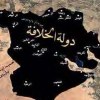![]()
Fri, Dec 7, 2012 | MEForum | by Aymenn Jawad Al-Tamimi
Originally published in The Daily Star (Beirut).
Of all the Christian communities in Syria, the Assyrians, that is, those Christians who identify as such by virtue of belonging to the Assyrian Church of the East, arguably have the most complex relationship with the Assad regime. Assyrians are concentrated in the northeast around Hasakeh, with others settled in Damascus and Aleppo. As was the case in Saddam Hussein’s Iraq, a problem for Syria’s Assyrian community has been the traditional denial of the Assyrian identity by the pan-Arab Baathist ideology. This has culminated in the destruction of numerous Assyrian villages in the north of Iraq as part of Saddam’s Arabization program.
This fraught relationship contrasts with the narrative that portrays the Assad regime, like that of Saddam, as protectors of Christian minorities. Indeed, in Iraq many Assyrians joined the Kurdish Peshmerga forces who were opposed to the regime. In Syria today, the local branch of the Iraq-based Assyrian Democratic Movement has been a part of the opposition Syrian National Council since the beginning of the unrest in March of last year.
This local branch known as the “Assyrian Democratic Organization” has been targeted numerous times by the Syrian government, particularly after it became a signatory to the Damascus Declaration of October 2005 that criticized Bashar Assad’s regime and called for a process of democratic reform in Syria.
However, the ADO’s stance in support of the opposition differs from that of the Assyrian Church of the East hierarchy, which prefers to maintain a position of neutrality, similar to its stance on Kurdish-Assyrian relations in Iraq.
The tension between the Assad regime and Assyrian nationalists inside and outside of Syria contrasts notably with the relations certain Christians, who identify themselves as Aramean nationalists, have maintained with the Syrian government. Aramean nationalists, who trace an identity to the Arameans of antiquity, primarily belong to the Syriac Orthodox Church — one of the main Christian denominations in Syria after the Antiochian Greek Orthodox Church and the Melkite Greek Catholic Church, whose adherents tend to see themselves as just Arabs. Like the Syriac Orthodox, they are concentrated in the western half of Syria. While exact numbers are difficult to ascertain, it is likely that there are more members of the Syriac Orthodox in Syria than there are members of the Assyrian Church of the East.
As analyst Phillip Smyth has noted, Assad was able to court the sympathies of some Aramean nationalists by promoting the teaching of Western Neo-Aramaic — the last true living relative of the language of Jesus — in the village of Maaloula in Syria. While Assad put an Arabist spin on the initiative, describing Aramaic as an “Arabic language,” this did not prevent the chairman of the Aram-Nahrin organization — an Aramean nationalist group based in the Netherlands — from expressing gratitude to the Syrian president in 2009. He thanked him for his “noble efforts to revive and strengthen the Aramaic language in the lands of the Aramean forefathers. This is a shining and commendable example to the entire Middle East.”
Even now, Aram-Nahrin’s sympathies for Assad are apparent. On its website, the group affirms that the Syrian government is “suppressing the Aramean cultural heritage.” However, it has not removed a link to the 2009 letter sent to Assad.
The group has also attacked Smyth and me for refuting the conspiracy theory that the “satanic act [of the massacre] in Houla was carried out by the Western death-squads and mercenaries [i.e. the Syrian rebels],” while offering a defense of their “Aramean sister Mother Agnes-Mariam,” who actually identifies herself as an Arab and was one of the first to promote the false claim that Syrian rebels carried out the Houla atrocity in order to pin the blame on the regime.
It should be emphasized that not all Aramean nationalists share the pro-Assad leanings of Aram-Nahrin. Nevertheless, because of Aram-Nahrin’s cordial relations with Assad as well as its fierce attacks on conceptions of Assyrian identity, described as an invention of European colonial powers, one occasionally hears from Assyrian nationalists, that the concept of Aramean nationalism was invented by Syrian Baathists to divide the region’s Christians and divorce them from their true Assyrian identity. Concerning the status of the Assyrian community in the present Syrian civil war, a main concern has been that Assyrians in Syria could be caught in the middle between different warring factions.
These fears have been borne out by a number of recent incidents. A village near Hasakeh was recently bombed by regime forces on the grounds that rebels were hiding there. The local church and several homes were destroyed, and one student was killed.
Conversely, many Assyrians in Aleppo have complained of being targeted by rebels. The allegation makes sense when one considers the localization of the hard-line jihadist phenomenon in Aleppo and Deir al-Zor. Assyrians, like Maronites in the Jdeideh quarter of Aleppo, have come to regard regime forces fighting the rebels in Aleppo, as the lesser of two evils. Furthermore, near Hasakeh, a few Assyrians have allegedly been kidnapped by Kurds.
None of the above incidents has been covered by the likes of Agenzia Fides, the Vatican’s news agency, which has offered up numerous stories of alleged mass persecution of Christians in Syria but has not generally been based on reliable sources.
As for the future of the Assyrian community in Syria, the main risk factors include not only continued targeting by the regime and by hard-line Islamist militants, but also the possibility of an intra-Kurdish civil war between Kurdish factions. The Kurdish civil war of the 1990s in Iraqi Kurdistan saw many Assyrian villages targeted by the Kurdistan Workers Party. The same fate could well befall rural communities of Assyrians in the northeast of Syria.
In such a context, one could well see many Assyrians in Syria fleeing to established Assyrian communities in the Nineveh plains of Iraq (just south of Iraqi Kurdistan), parts of Iraqi Kurdistan, or small locales in Western countries such as the United States.
Aymenn Jawad al-Tamimi is a Shillman-Ginsburg Fellow at the Middle East Forum, and a student at Brasenose College, Oxford University.



 RSS
RSS











Latest Comments
Hello Mike, Thank you for your positive feedback to the article. I felt there wasn’t too much critical analysis of ...
Thanks for this considered and well constructed article. A follow up article on the manner in which the editorial contro...
THE CLUELESSNESS OF CLAIMING THAT OBAMA'S MIDDLE EAST POLICIES WERE A FAILURE CANNOT BE FURTHER FROM THE TRUTH, WHAT THE...
As long as Obama is the president of the usa do not trust the us government......
Thank you for an good read....